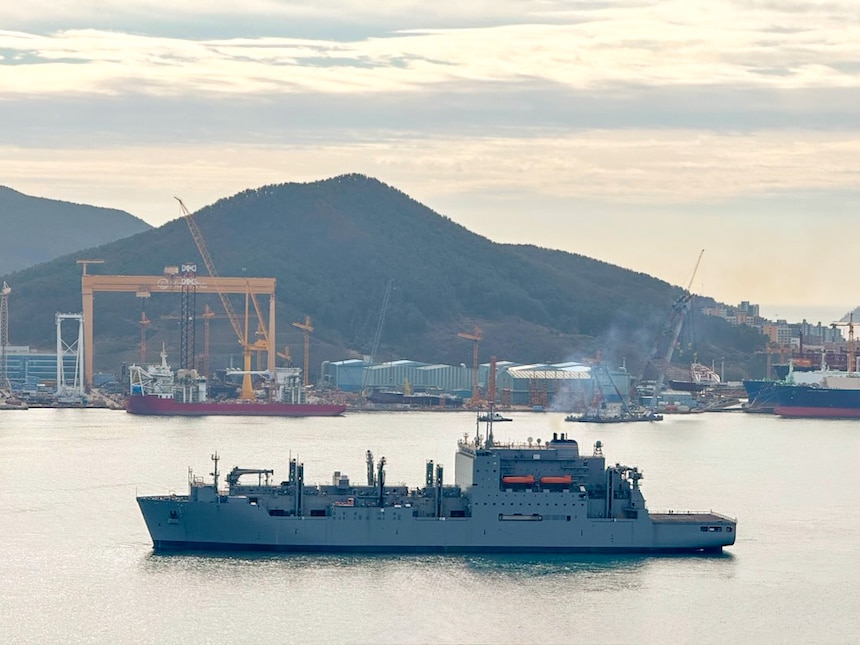Source: United States Navy
GYEONGSANGNAM-DO, Republic of Korea – Military Sealift Command’s (MSC) Lewis and Clark-class dry cargo ship USNS Wally Schirra (T-AKE 8) completed a seven-month regular overhaul (ROH) at Hanwha Ocean, Gyeongsangnam-do, Republic of Korea, March 12, 2025.
Military Sealift Command’s (MSC) Lewis and Clark-class dry cargo ship USNS Wally Schirra (T-AKE 8) completed a seven-month regular overhaul (ROH) at Hanwha Ocean, Gyeongsangnam-do, Republic of Korea, March 12, 2025.
The ROH marks the first time that a Republic of Korea shipyard has bid on and won an ROH contract of this scale for an MSC vessel. The ROH is much larger work vice voyage repairs (VRs), which are conducted routinely in the Republic of Korea.
“The Republic of Korea’s ability to conduct large-scale maintenance to USNS ships within the Indo-Pacific Theater demonstrates the strong strategic partnership between the Republic of Korea and the United States,” said Rear Adm. Neil Koprowski, Commander, U.S. Naval Forces Korea. “Maintenance in Theater reduces downtime and costs, while enhancing operational readiness. This is a landmark achievement to be celebrated as a symbol of our strengthened partnership and ironclad commitment to the ROK-U.S. alliance.”
ROH conducted aboard Wally Schirra in the Republic of Korea included dry docking, and more than 300 work items that addressed hull corrosion and a full rudder replacement.
“Hanwha addressed extensive deterioration and damage to the hull, propeller, rudder, and rudder post/steering gear,” said Cmdr. Patrick J. Moore, commanding officer, MSC Office-Korea. “Notably, Hanwha engineers reverse-engineered the damaged rudder, completely replacing the unit when blueprint were not available. This saved significant time and resources in getting Wally Schirra back to sea, a testament to their resilient supply chains, advanced automations, and skilled workforce.”
Wally Schirra is one of the many ships that are part of the U.S. Navy’s Combat Logistics Force (CLF). CLF are the supply lines to U.S. Navy ships while at sea. These ships provide virtually everything Navy ships need including fuel, food, fleet ordnance, dry cargo, spare parts, mail, and other supplies.
“We appreciated the opportunity to complete this maintenance in the Republic of Korea, which will ensure Wally Schirra is ready for any tasking,” said Moore. “The addition of ROH capability for MSC ships in the Republic of Korea’s shipping industry adds additional means to deliver repair of military logistics vessels in order to sustain the readiness necessary to support Fleet operations.”
CLF ships enable the Navy fleet to remain at sea and combat ready for extended periods of time. In addition to U.S. Navy ships, CLF ships also resupply international partners and allies operating in the Indo-Pacific Region.
MSC Far East supports the U.S. 7th Fleet and ensures approximately 50 ships in the Indo-Pacific Region are manned, trained, and equipped to deliver essential supplies, fuel, cargo, and equipment to U.S. forces and coalition partners, both at sea and on shore.
